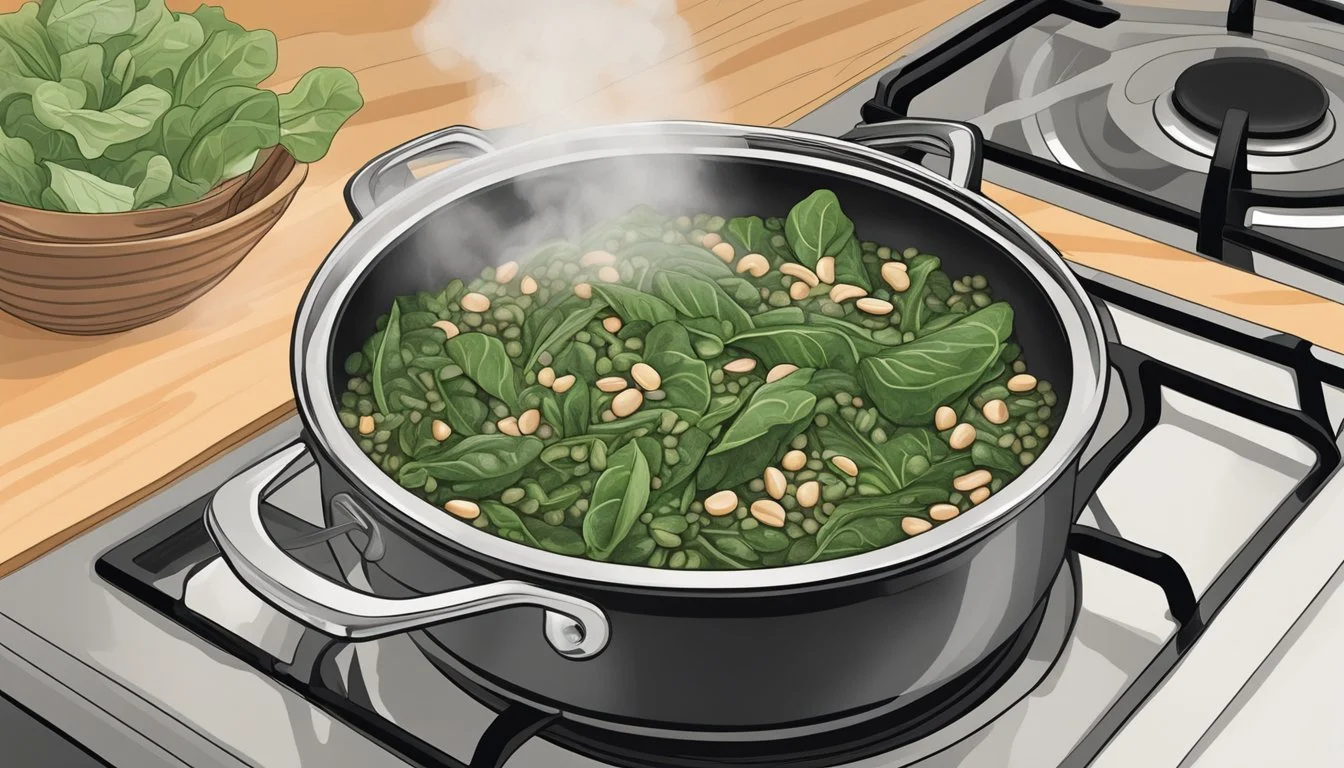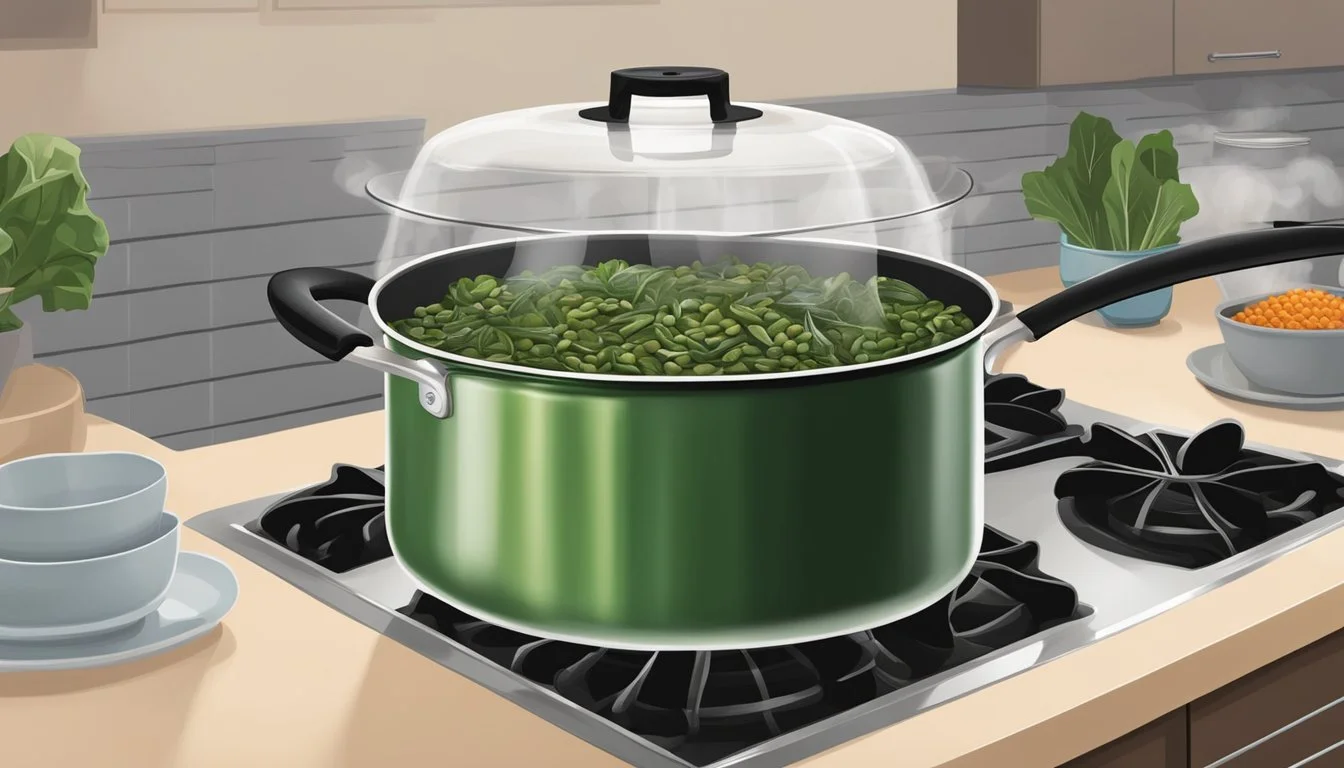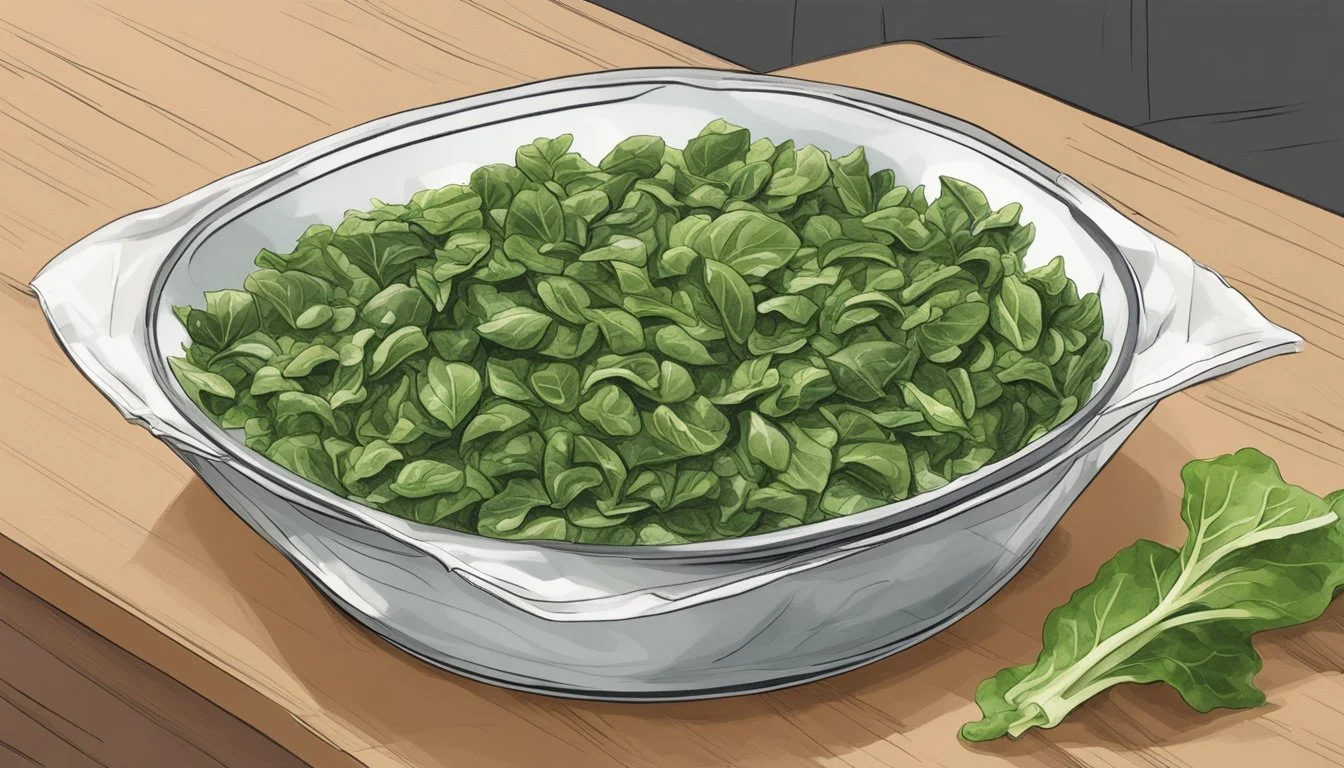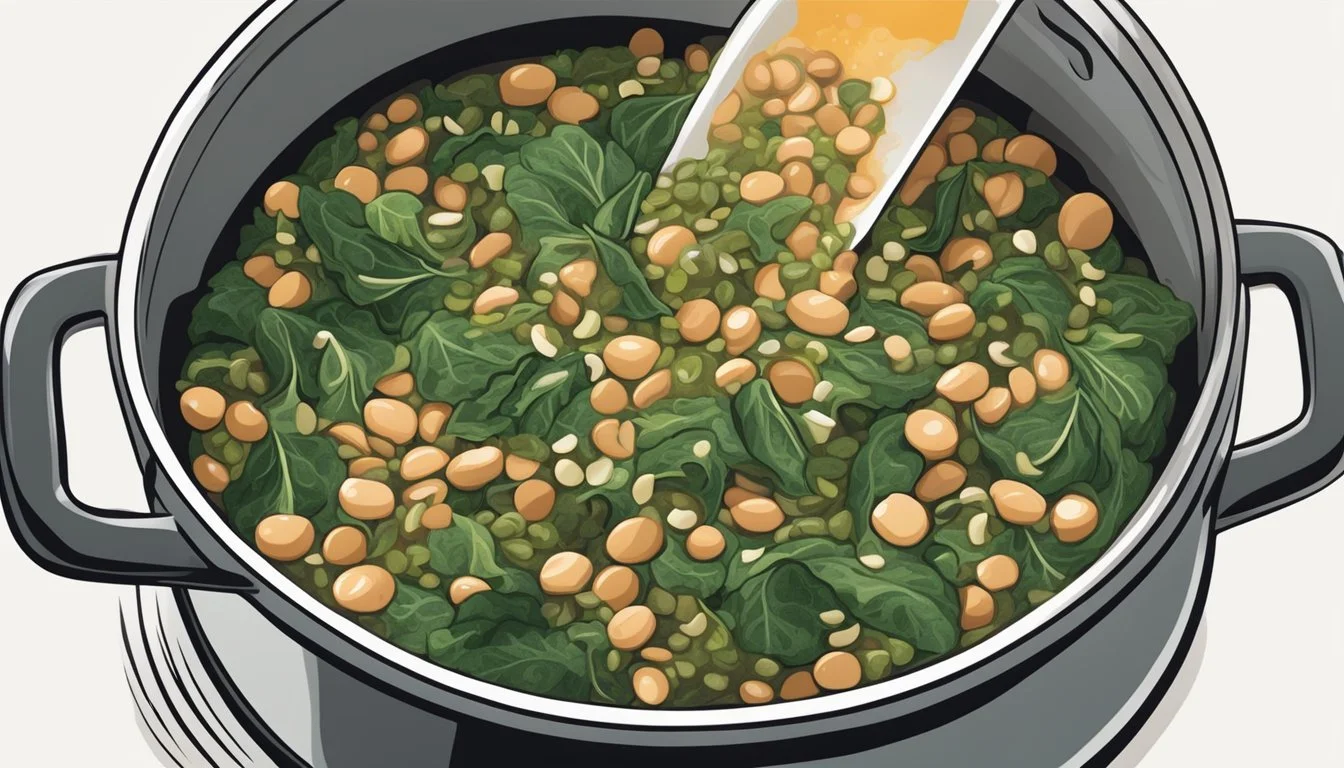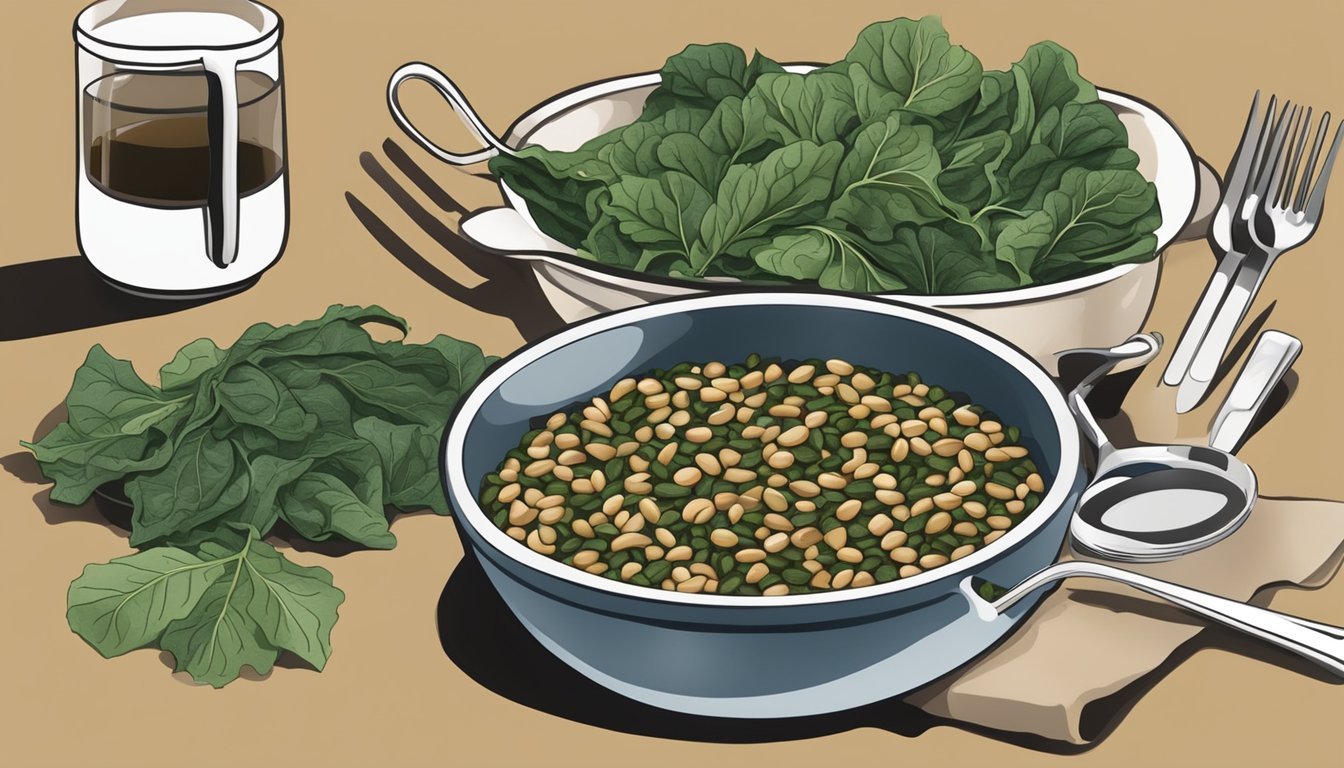Best Way to Reheat Black Eyed Peas and Collard Greens for Optimal Tenderness
Reheating black-eyed peas and collard greens while maintaining their tenderness and flavor is a gentle process that requires attention to detail. These staple dishes, revered for their rich taste and nutritional value, often make an appearance at family gatherings and festive mealtimes. Ensuring that these meals retain their quality during reheating is key to enjoying leftovers that are as satisfying as when they were first prepared.
Microwaving is a quick method, but can often result in uneven heating and a mushy texture. A better approach is reheating them on the stovetop or in the oven. Both methods promote even warmth distribution, reducing the risk of overcooking the edges while the center remains cold. Low and slow is the guiding principle, with a preference for a covered pot on the stovetop or a preheated oven set to a moderate temperature.
When utilizing these methods, a splash of liquid such as water, broth, or the original cooking juices should be added to keep the peas and greens moist and flavorful. Stirring occasionally on the stovetop or covering with foil in the oven will also help prevent drying out. If done properly, these techniques ensure that black-eyed peas and collard greens emerge from reheating just as tender and delicious as when they were initially served.
Understanding the Basics
In this section, we explore the fundamentals of black eyed peas and collard greens, spotlighting their nutritional profile and the cultural heritage they carry, particularly within southern comfort food traditions.
What Are Black Eyed Peas and Collard Greens?
Black eyed peas are small, creamy-flavored legumes with a distinctive black spot. They are a staple in Southern cuisine, often prepared as a soul-food dish. Collard greens, on the other hand, are leafy vegetables with a robust, slightly bitter taste and are a common feature in both African and Southern cooking.
Nutritional Benefits
Black eyed peas are a rich source of protein and fiber, aiding in digestion and providing sustained energy. They also contain vital nutrients like potassium, which supports heart health, and folate, essential for DNA synthesis and repair.
Collard greens are nutritionally dense, packed with calcium for bone strength and vitamins such as A, K, and C. The high fiber content also enhances digestive health. Together, these foods form a nutritious combination that supports overall well-being.
Cultural Significance
Black eyed peas are intertwined with prosperity and good luck, especially when eaten on New Year's Day, as per Southern tradition. While collard greens are said to represent wealth, these foods are integral to southern comfort and soul food culinary practices, reflecting a rich history of comfort food that dates back to African influences on Southern cuisine. This heritage labels them as more than mere sustenance; they are symbolic of a prosperous and nutritious southern dish.
Preparation Before Reheating
To ensure that black-eyed peas and collard greens retain their tenderness after reheating, one must pay careful attention to the selection of ingredients, the initial cooking process, and the proper storage techniques.
Choosing the Right Ingredients
Selecting fresh and high-quality ingredients is crucial. For black-eyed peas, one can choose between dried or canned varieties. Dried peas require soaking and longer cooking times but often result in a superior flavor and texture. Canned black-eyed peas offer convenience and are ready to cook with no soaking needed. Fresh collard greens should be vibrant and without any yellow or wilted leaves. Key flavor enhancers include smoked bacon, ham hock, or even smoked turkey parts for the marination process.
To enhance the dish with aromatics:
Fresh garlic and onions, finely chopped
High-quality olive oil or unsalted butter for sautéing
Initial Cooking Tips
One should heed the initial cooking process to ensure the best quality of black-eyed peas and collard greens. Simmering in a Dutch oven or a heavy-bottomed pot allows the flavors to meld and the peas to cook evenly. Incorporate the seasonings like tomatoes, garlic, and onions for a rich bouquet of flavors. For fresh peas, simmer until tender. When using canned beans, reduce cooking time as they are pre-cooked.
Key steps for initial cooking include:
Soak dried black-eyed peas if using, ideally overnight.
Sauté onions and garlic in olive oil or butter until translucent.
Incorporate a ham hock or bacon into the pot for a depth of flavor.
Storing for Reheating
Proper storage is paramount in preserving the tenderness and quality of the cooked dish. After the initial cook, allow the black-eyed peas and collard greens to cool completely before storing. Use airtight containers and refrigerate if the leftovers are to be consumed within a few days. For longer storage, freezing in sealed containers or bags is recommended. This pause in the cooking process can actually result in the flavors melding together even more effectively.
To store effectively:
Let the dish cool to room temperature before sealing to prevent condensation.
Store them in the refrigerator for up to three to four days.
Freeze for several months, ensuring air is expelled from freezer bags to prevent freezer burn.
Reheating Methods and Techniques
Reheating black-eyed peas and collard greens properly is essential for maintaining their tenderness. Below are specific techniques to ensure these dishes retain their flavor and texture when reheated.
Stovetop Reheating
For stovetop reheating, one should gently simmer the black-eyed peas and collard greens in a saucepan. If the peas and greens have dried out, it's advisable to add a small amount of water or broth to keep everything tender. Stir occasionally to promote even heat distribution.
Oven Reheating
When using the oven, one should preheat it to a moderate temperature — around 350°F. Place the leftovers in an ovenproof dish, and add a bit of liquid if they seem dry. Cover with aluminum foil to prevent drying out and heat until warmed through, which typically takes about 10-15 minutes.
Using a Crock Pot
For a crock pot, set it to the low heat setting, as slow and steady heat helps maintain the tenderness of black-eyed peas and collard greens. One should add a splash of water or broth to ensure the food doesn't stick to the bottom and cover with the lid. The duration for reheating will vary, but it should be monitored to prevent overcooking.
Reheating in an Instant Pot
Utilizing an Instant Pot can be a convenient method for reheating. One can add the black-eyed peas and collard greens with a small amount of liquid to prevent sticking, and use the 'Keep Warm' or 'Steam' setting to reheat the food. This method ensures even reheating while preserving moisture.
Seasoning Adjustments and Enhancements
When reheating black-eyed peas and collard greens, the right seasoning adjustments can rejuvenate flavors and enhance tenderness. Both the initial heating and reheating processes can diminish the vibrancy of herbs and spices, so adjustments are necessary to ensure the dish retains its desired flavor profile.
Balancing Flavors Post-Reheating
After reheating, it's crucial to taste the dish and rebalance flavors as needed. One may find that the dish needs a touch more salt or a dash of pepper to enhance its overall taste. Adding a small amount of apple cider vinegar or lemon juice can brighten the dish and bring forward a fresh zing. If the flavor falls flat, a hint of Worcestershire sauce or mustard might add the depth it's missing.
Herb and Spice Recommendations
Post-reheat seasoning is about subtle additions that complement the dish. Here are some herb and spice recommendations:
Spices: A pinch of smoked paprika can add a layer of complexity with its smoky undertones. If a hint of heat is desired, chili flakes or finely diced jalapeños may be integrated carefully into the peas and greens.
Herbs: Fresh herbs such as bay leaf or thyme can infuse a delicate fragrance that might have been lost during the initial cooking or reheating.
Oils and Sauces: A drizzle of olive oil can reintroduce a velvety texture to the greens, while hot sauce can be offered on the side for those who prefer an extra kick.
Incorporating these adjustments ensures a robust and healthy flavor profile for the reheated black-eyed peas and collard greens.
Complementary Dishes and Servings
When reheating black-eyed peas and collard greens, one should consider side dishes that will maintain the integrity and comforting nature of this Southern traditional meal.
Traditional Side Dishes
Cornbread: A classic partner, it adds a sweet, crumbly texture. Making it with buttermilk lends richness, and for a gluten-free version, one can substitute cornmeal.
Buttermilk Biscuits: Flaky and buttery, these biscuits are a staple that can sop up the flavors of the black-eyed peas and greens.
Rice: A simple bed of white rice complements the tender vegetables, enhancing the meal’s heartiness.
Soup: For a lighter accompaniment, a brothy soup can provide balance to the rich flavors of the main dishes.
Grits: Creamy grits, enriched with butter or cheese, can act as a smooth contrast to the textured peas and greens.
Modern Pairings
Tamari-Glazed Vegetables: For a modern twist, vegetables glazed with tamari present a savory, umami-rich side that's also suitable for a vegetarian or vegan diet.
Milk-Braised Pork: Non-vegetarian options like milk-braised pork can offer a succulent and tender meat that complements the savory profile of the black-eyed peas and collard greens.
Gold Potatoes: Roasted or boiled, gold potatoes provide a buttery and filling addition that’s easy to prepare and serves as a comforting side.
Vegan Corn Soup: A hearty vegan corn soup made with cornmeal as a base can satisfy the need for comfort food whilst adding a creamy texture.
Incorporating these sides with reheated black-eyed peas and collard greens ensures a meal that is rooted in Southern comfort yet adaptable to various dietary preferences.
Frequently Asked Questions
Q: What is the best method to reheat black-eyed peas and collard greens to maintain tenderness?
A: To preserve tenderness, gently reheat on the stovetop over medium heat. Start by adding a small amount of water or broth to the pot to prevent sticking and drying out. If the peas and greens are drained, add a touch of moisture to keep them soft.
Q: Can I add butter when reheating for added flavor?
A: Yes, a little butter can enhance flavor and contribute to a richer texture. Stir it into your black-eyed peas and collard greens while reheating.
Q: Should I consider adding spices or variations when reheating leftovers?
A: Reheating is an excellent time to adjust flavors. Feel free to add spices for extra warmth or create variations to suit one's taste, keeping health considerations in mind.
Q: How can I keep my reheated dish healthy and possibly gluten-free?
A: To keep the dish healthy, focus on using low-sodium broth and limit the addition of high-fat ingredients. Ensure all added spices and variations, like gluten-free thickeners if used for soup, are suitable for a gluten-free diet.
Q: Is it possible to reheat the dish in a way that it brings good luck, akin to Southern comfort food traditions?
A: While no reheating method guarantees good luck, enjoying a classic dish like black-eyed peas and collard greens is a Southern tradition believed to bring prosperity, symbolizing coins and wealth.
Q: How do leftover black-eyed peas and collard greens benefit digestion?
A: These foods are high in fiber which can help maintain healthy digestion. Reheating gently helps preserve these benefits.
Q: Can this dish be made vegan?
A: Yes, to make it vegan, use plant-based butter or oils, and ensure the broth is vegetable-based. Avoid any animal-derived ingredients.
Q: What is typically served with this dish?
A: Cornbread is a staple accompaniment for black-eyed peas and chopped collards, complementing the hearty textures and flavors, and providing an authentic Southern comfort food experience.


